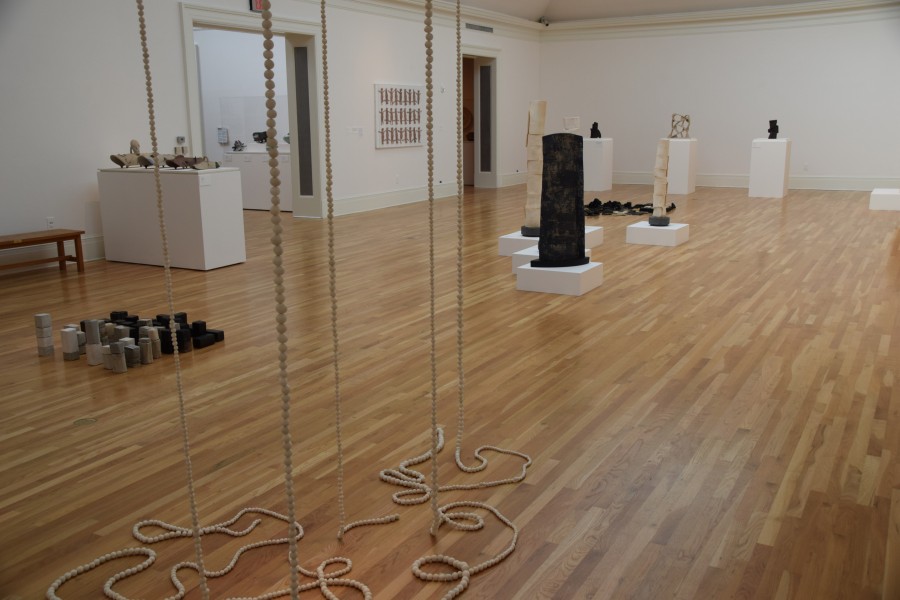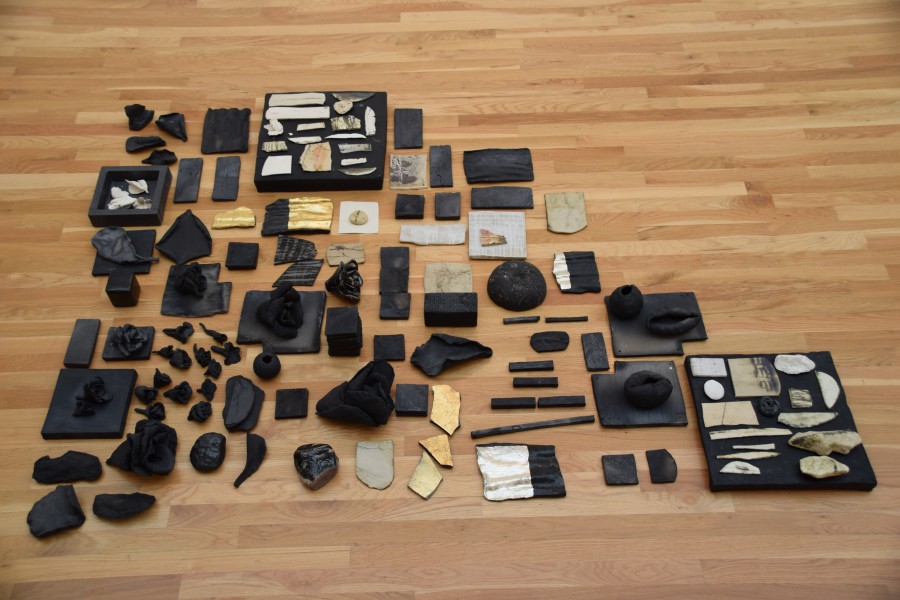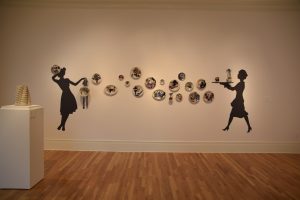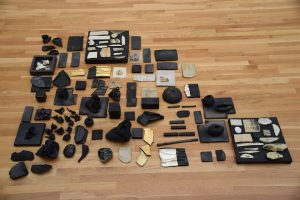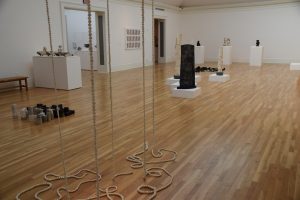Kiln it: Clay exhibits construct contemporary spin on classic Newcomb pottery
By fusing traditional and contemporary mediums, two new Newcomb Art Museum exhibits link the past and the present to create work that is both ambitious and grounded.
The Newcomb Art Museum has two new exhibitions on display in the Woldenberg Art Center that are open to the public and will run until March 24.
The first exhibit, “Clay in Transit: Contemporary Mexican Ceramics,” highlights seven contemporary artists who use clay to sculpt everything from ceramic cups of ramen noodles to traditional “barro negro,” or black clay pottery.
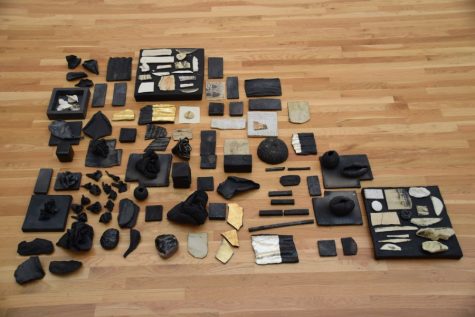
Traditional “barro negro,” or black clay pottery appears in “Clay in Transit: Contemporary Mexican Ceramics.”
“[The pieces] also build upon the collective histories of their chosen medium – clay as nature, clay as origin, clay as shelter, clay as dam, clay as vessel, clay as terra firma,” reads the exhibit’s website.
The “Clay in Transit” exhibition also includes several video presentations of the featured artists that explain their purposes for creating their art and the processes that their art goes through.
The second exhibit, “Clay in Place: Highlights from the Collection,” features artwork from Newcomb Pottery, Newcomb Guild, various alumni, current faculty and former faculty of Newcomb.
“There are many connections between the two exhibitions, especially in terms of subject matter and approach. The physical form of a totem recurs throughout both exhibitions, for example in the works of Peter Voulkus, Paloma Torres and William DePauw Jr.,” said Laura Blereau, Newcomb’s curator and coordinator of academic programming.
“While researching the collection I sought pieces that demonstrated beauty, visual complexity and a command of the material,” Blereau said.
According to the exhibit’s website, some of the artists featured in “Clay in Place” were members of Newcomb College’s inaugural pottery decorating class, which opened in the fall of 1895.
“Newcomb Pottery has a very distinctive aesthetic. It emulates the arts and crafts style, but it also uses local flora and fauna from the South,” Adjunct Curator for the Gardiner Museum Rachel Gottlieb said in a video about the work.
The women of Newcomb Pottery are renowned for the terra cotta they used, which was created from a mix of clay from different areas in and around New Orleans, including the Mississippi River, Lake Pontchartrain and Bayou Tchulakabaufa.
“Social mores of the period prohibited women from throwing works themselves … in the early 1900s, however, the women began incising and sculpting the leather-hard clay before its firing,” reads a museum label in the exhibit.
Becoming even more active in the pottery-making process gave the artists more control and freedom in the designing process. Incorporating scenes from their childhoods in New Orleans – a majority of Newcomb’s students were natives – gave the pottery an authentic, Southeastern Louisiana aesthetic that is highly regarded today.
“The history of Tulane is inseparable from the history of New Orleans. It’s difficult for me to imagine existing in another city that is not New Orleans,” Austin Mankin, a New Orleans native and Tulane student, said.
As a native attending a school whose student-body is primarily from out-of-state, Mankin appreciates Tulane’s attempts to expose the community to a more authentic side of New Orleans culture.
“I can’t think of a better way for people to learn about the very intertwined history between Tulane and New Orleans than through art,” Mankin said.
Your donation will support the student journalists of Tulane University. Your contribution will allow us to purchase equipment and cover our annual website hosting costs.



